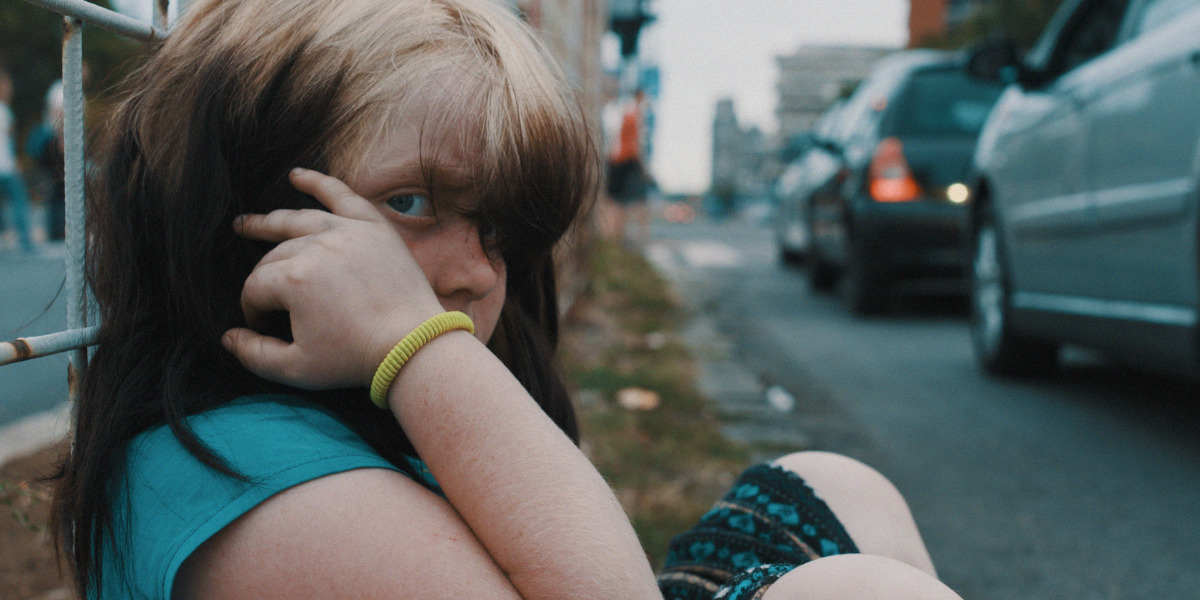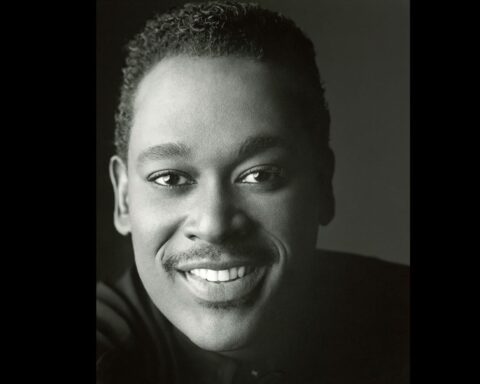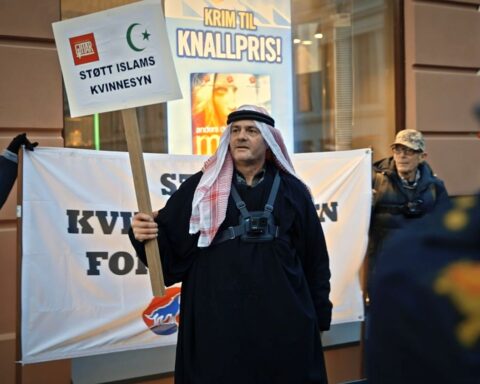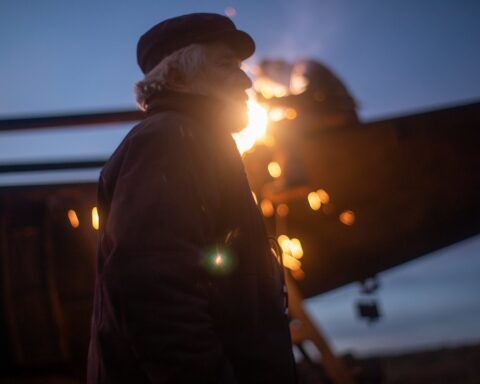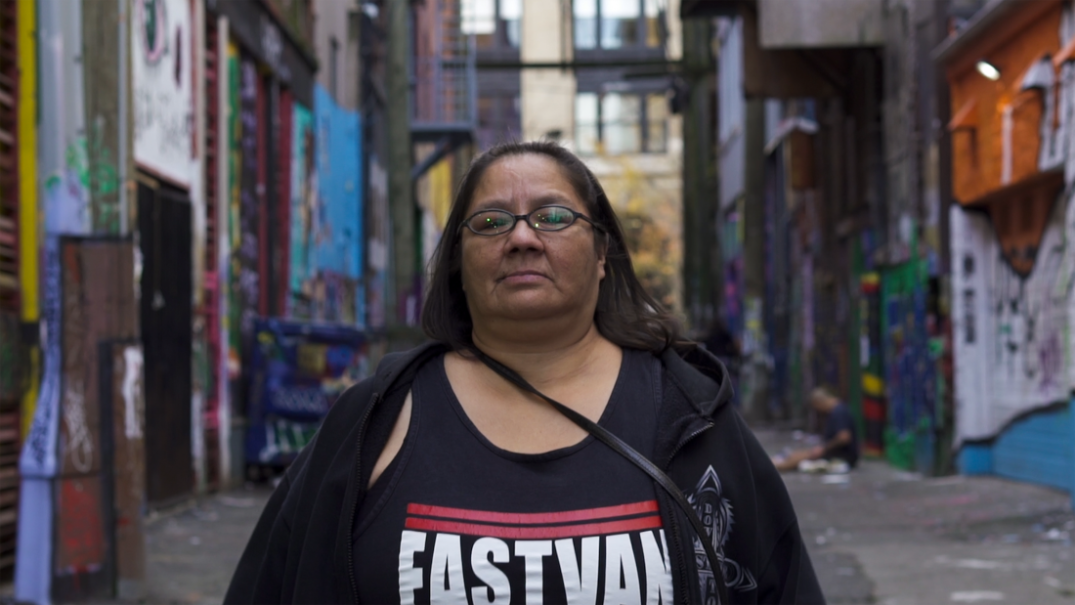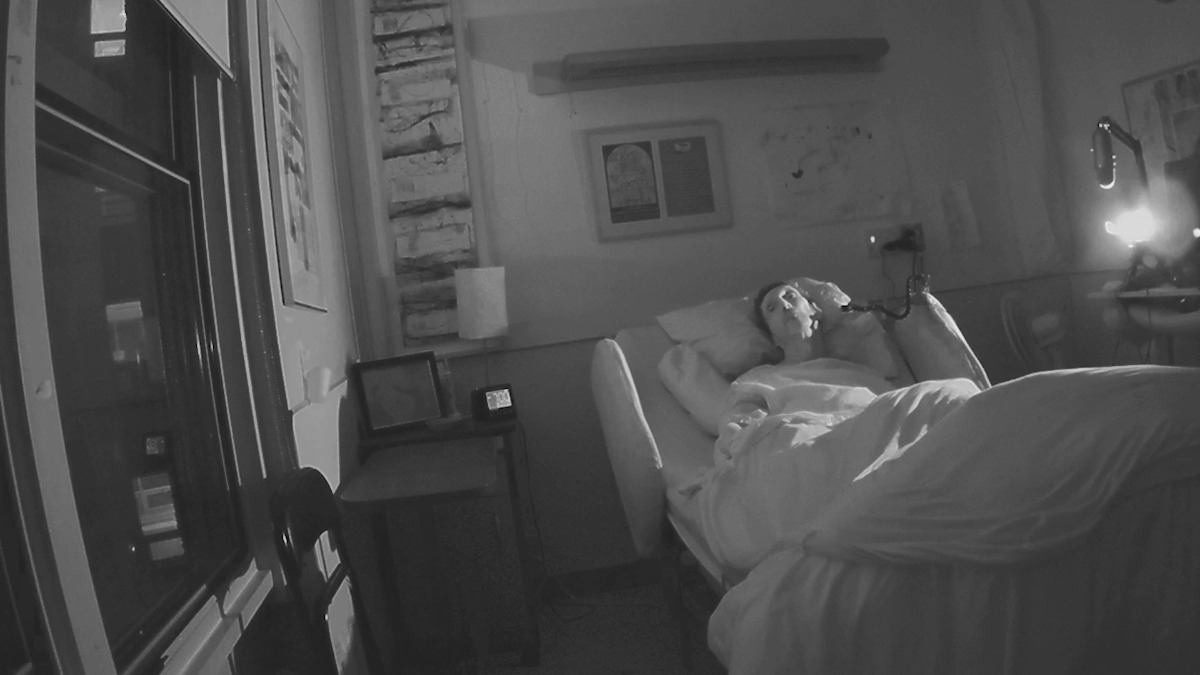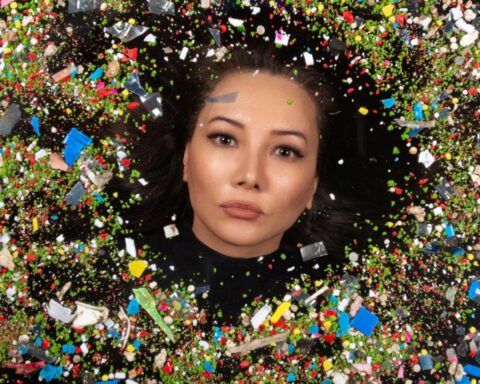Meet Milica, Vera, and Mara. They are three “residents” of the Museum of the Revolution in Belgrade. What once was meant as a site to commemorate the future hope of Yugoslavia now remains as an ironic monument for stillborn progress. Director Srđan Keča explores the undeveloped space that houses these three generations of women who find shelter in the scars of the site. Nearly fifteen minutes pass by in Museum of the Revolution as the camera watches young Milica play with the elder Mara in the dark cavernous hole they inhabit.
Keča observes the lives of these three women with an astutely poetic eye. Young Milica boldly takes charge of the situation and guides her mother, Vera, through the streets of Belgrade. They wash windshields energetically as cars pass by on the busy road that borders their zone on the periphery from the developments that rise all around them.
Museum of the Revolution is an immersive experience that allows viewers to enter the spaces the women inhabit and witness with intimate immediacy the precariousness with which they live day by day. Making shrewd use of long takes, stillness, and silence, the film is a thoughtful meditation on homelessness and survival. Neither objectifying nor sentimentalizing the stories of Milica, Vera, and Mara, the film is a frank look at life on the margins. If the abandoned Museum of the Revolution was meant to be a sign of progress, the film invites viewers to consider the hopes for a society that stands memorialized as a chasm of forgotten dreams.
POV spoke with director Srđan Keča at Hot Docs following the North American premiere of Museum of the Revolution.
POV: Pat Mullen
SK: Srđan Keča
This interview has been edited for brevity and clarity.
POV: You did an installation in 2014 with Museum of the Revolution. What inspired you to look at it for a feature?
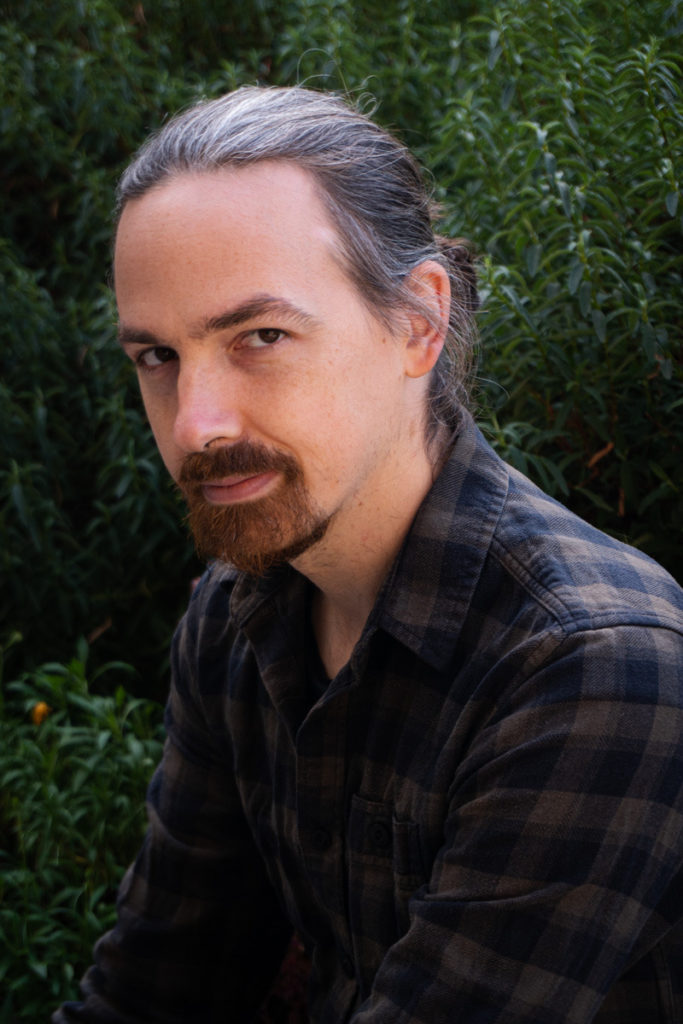
SK: I felt there was something more to do with the metaphor of the abandoned project of the Museum of the Revolution. The fact that this was a space meant to “safeguard the truth” about the people of Yugoslavia made it all the more haunting. Also, while shooting the installation piece we became friends with Mara, the old lady who later on took part in the film. My assistant director [Radiša Cvetković] and I continued visiting her over the next couple of years and stayed in touch with her. I was sure there was a film there but I didn’t see how it might unfold. There was no relationship for a feature-length film to rest on. Then one day I saw Mara playing with this amazing little girl, Milica. Everything clicked for me in that moment. The next morning, we essentially started shooting the film.
POV: How did Vera feel about joining the project?
SK: That came a little bit later. For the first six months or so, the project was centered around the relationship between Milica and Mara. I thought of their games as a little utopia inside this abandoned utopia – which is all but utopia now. Then Milica’s father landed in prison and Vera became a much more prominent figure in her life. Simultaneously with that, the threat of eviction from the basement became very real. So these three women were, in a sense, on their own out there, even providing for others. At the same time, this brought a sense of independence, which made it possible for them to participate in a film like this.
POV: How can you explore space and place differently in a film versus an installation?
SD: The installation really made use of the space of the Pavilion of Serbia in Venice, where it was exhibited. We painted all the walls black to mimic the darkness of the basement. In the footage, we were working with light and sound that were entering the basement from the outside, and with the ideas of the architect Vjenceslav Richter. Later, when we started working on the film, I saw all of that as a vehicle for something bigger. The basement became a lens through which to explore the city and our society. It was a refuge for people who were pushed out of other spaces that were being redeveloped, but I also saw it as a metaphor for the refuge that the three protagonists found in one another.
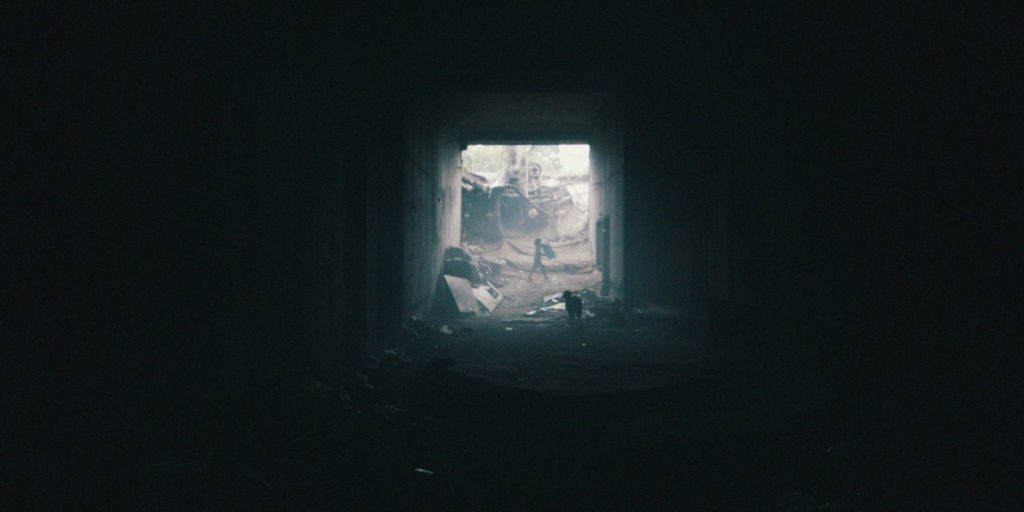
POV: The film has such an interesting contrast at the beginning with the archival propaganda. What motivated that contrast?
SD: We actually had a lot more. We did a lot of archival research for the film. At some point, we had upwards of 10 minutes of archive in a cut of the film in several places. We eventually decided to keep it minimal at beginning of the film to build up a sense that there was a dream about this space, and not only the space of the museum itself, but the wider space of New Belgrade. A city that now houses half a million people was built on top of marshes in the late 1950s, 1960s, and early 1970s, and the Museum of the Revolution was supposed to be a landmark of this big project.
I wasn’t interested at all in the Yugoslav elites and the iconic stuff that’s usually present in media and in films from our region. Instead, I was interested in the people doing the building, and I wanted to play with this contrast between a crowd in the archive and an empty, cold space in the present. And then the way that we tinted the archival footage orange anticipates the fire that Mara starts inside the basement, so a connection is made between these past dreams and an element in the present.
POV: The archive also contrasts with the observational footage too in that it’s very rhetorical, but then there’s a long stretch before we get much dialogue.
SK: 13 minutes!
POV: But it doesn’t feel slow. It’s an absorbing 13 minutes. What roles do sound and silence play for you in the film?
SK: There’s a lot going on inside the silence. Of course, I didn’t plan to have a stretch of 13 minutes with no dialogue—it just came together that way. At the same time, I think that happened because I wanted to prepare the audience for witnessing the lives of the protagonists. Throughout that stretch starting from the archival footage to the introduction of the space, of Mara, and then of Milica, it’s a little bit like a training of the senses. I wanted the audience to feel the space and to feel the time inside that space. We did a lot of sound design for those silent parts. There are dozens of layers that are playing together. We tried to give it a texture where you don’t quite know what you’re hearing. That was my experience of being inside the basement, because you hear the reverberations of the city and you keep trying to make out what you’re actually hearing, and where it’s coming from. It’s asking you to work. Similarly, with the darkness and this multilayered silence in the film, they are there to tune the senses and to establish a rhythm.
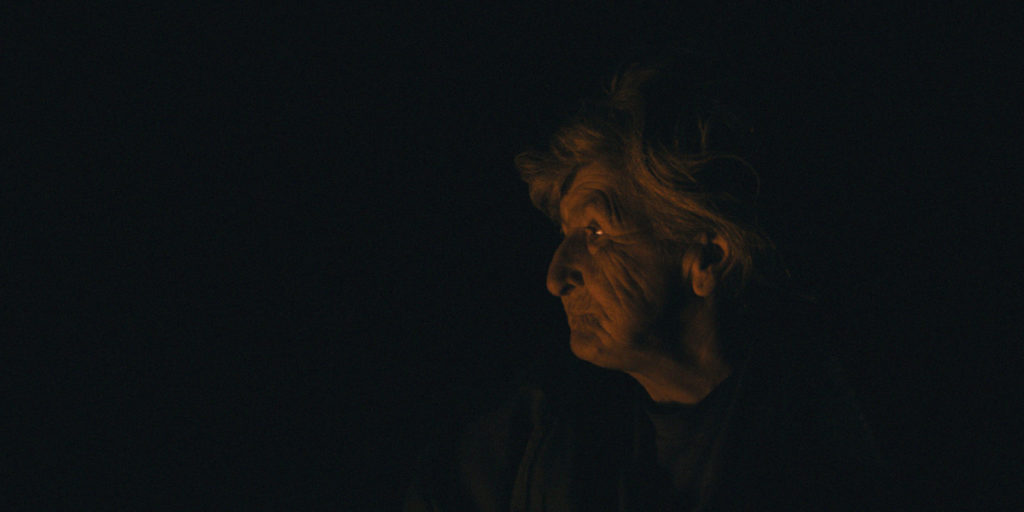
POV: In terms of senses, though, museums can be controversial because of the way they frame ways of seeing. Museum exhibits have a colonial gaze and power dynamic. How did you avoid that traditional museum gaze with this film?
SK: That was something I was concerned about when we were making the installation piece back in 2014. There’s a whole genre of socialist ruin porn, especially in photography with Yugoslav monuments, representing them as if some alien civilization built them and playing with SF [science fiction] tropes, but these monuments have histories and represent histories. I wanted to avoid that already with the installation, and the way to do that was to lean into the historical context, and to highlight the ideas and not just the ruin itself. For one component of the installation, we actually “built” the museum at scale with ropes and balloons. With the film, I wanted to put front and center the lives of the people who were there, not to see them as sort of exhibits within the space. The space eventually becomes much more about them than about the history it had before.
POV: The spatial relationships of the characters in regards to their environment are quite striking.
SK: I try not to contextualize and situate the protagonists inside space. It would’ve been easy, for example, to shoot a wide shot of Milica and Vera against the big development across the river, like, “Here’s the Big Bad Wolf on the other side.” The same with the concert. We could have planted the protagonists there to hammer home the point, but the idea was to separate them because their world is really separate from that world. It’s impacted by what’s happening inside the more conventional world of the city, but always indirectly. I wanted to respect the fact that their lives at that point took place within a kind of bubble. That was our experience of having spent many months with them, shooting and not shooting.
POV: How big of a crew did you have while shooting? Was it just you?
SK: It was me and my assistant director, who was also the sound recordist. Occasionally a third person would come to help – always someone who was a close friend.
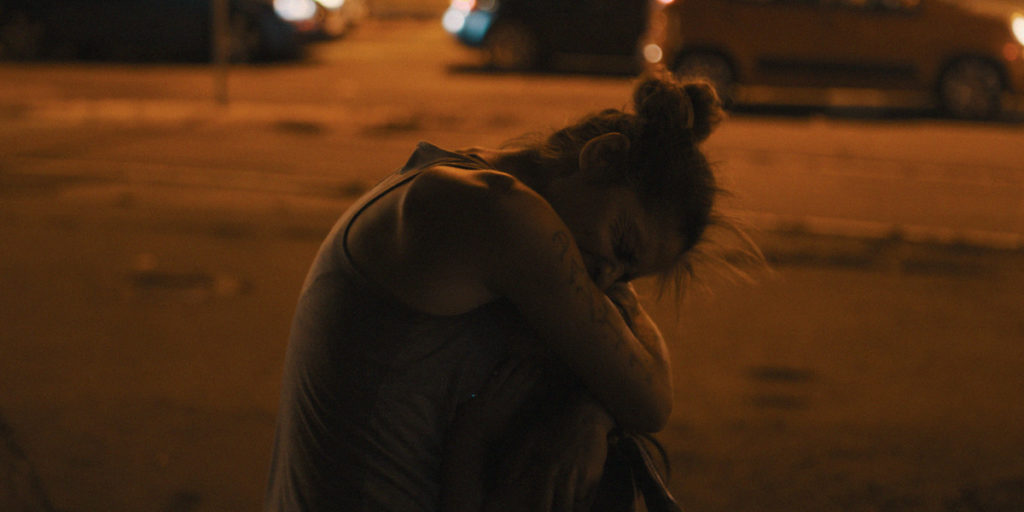
POV: What role do you think the camera had on Milica and Vera’s daily lives? Were you ever worried the camera might attract the attention of child services?
SK: They’re right in the middle of the city and the social services knew them. We couldn’t expose anything other than what they already knew. Milica and Vera are Roma – Mara is not – and I think this also goes back quite a long time to the way that the social services, in the Balkans at least but I think all over Europe, treat the Roma people who live these precarious lives in the streets. There is this sense that the Roma community have their own “rules” and the state tends to treat them as a collective body. So they don’t engage much with individual lives in those communities.
To go back to your broader question, we talked a lot about what aspects of their lives belong on the screen. There was a delicate balance to strike between the level of detail about their lives and the more allegorical layer of the film. Also, documentaries do have a privacy boundary. Milica herself actually had a brilliant filter. Whenever she felt that something didn’t belong on screen, or was simply bored with us filming, she would turn to the camera, snap her fingers as a clapperboard, and say, “Aaand cut!”
POV: She is such a natural with the camera. It’s interesting too how the film has such big characters, but there’s also a rhythm in terms of how it passes through time. You’ve discussed it as something between an observational film and an essay, so what was the process of shaping that rhythm?
SK: The way that we shot demanded a certain type of editing. We were trying to film long takes that follow the action, trying to understand the choreography and the rhythm of the action and then put together scenes out of just three or four shots. That was one parameter, but we also wanted to open up the film to these essayistic passages dwelling on spaces. If you already establish a certain rhythm in the sections with the protagonists and you have these long takes, then to shift the same gaze to space is not much of a change in style and language, it still feels like the same film. We also thought a lot about nights and of darkness as a space of opening up the film. The film starts in darkness, and every time there is a night, the film opens up a little wider in terms of space. Then it comes back, and we start a new chapter with the protagonists.
POV: What did observing this family teach you about your family? How did you identify with Milica and Vera’s story?
SK: I come from a working class Yugoslav family, so precariousness is pretty deeply ingrained in my experience of life. Even though the women in the film live more precarious lives than I’ve ever lived, I can relate to their experiences very much. I also wanted to film in the same way that I would’ve filmed my own family, with a similar sense of intimacy. Especially with the Roma in the Balkans, films often portray them with a distance, exoticising them. I wanted to focus on the precariousness of their lives, and this related back to the theme of the film being about dreams that go nowhere. Precarious living is defined by these discontinuities, by “the wind taking our plans away” as the proverb at the start of the film says. To me, that’s the defining experience of life in post-Yugoslav societies, but also of all precarious lives everywhere.
Museum of the Revolution screened at Hot Docs 2022.




